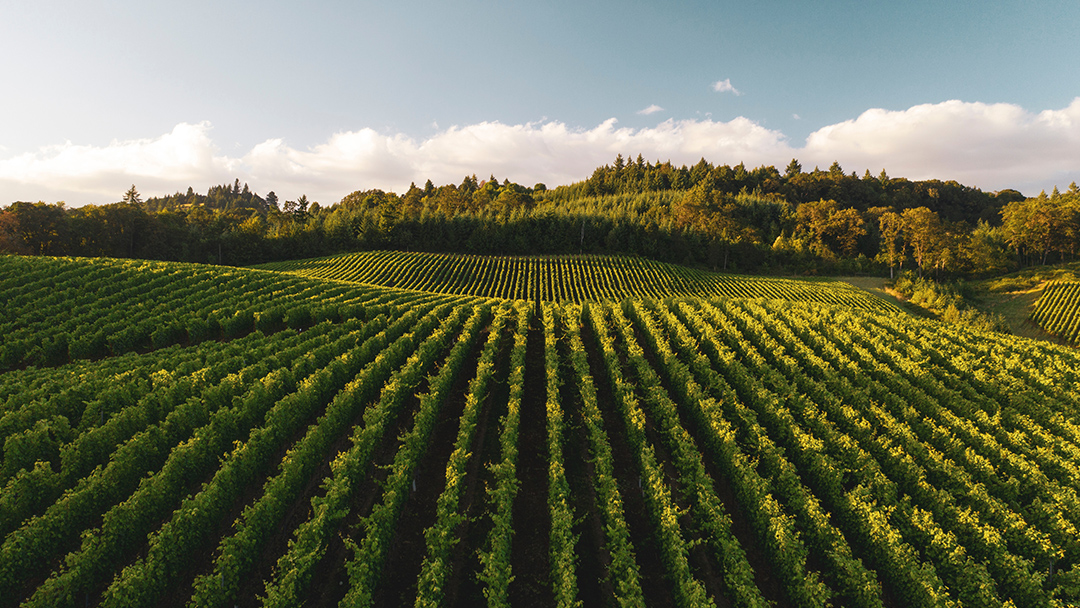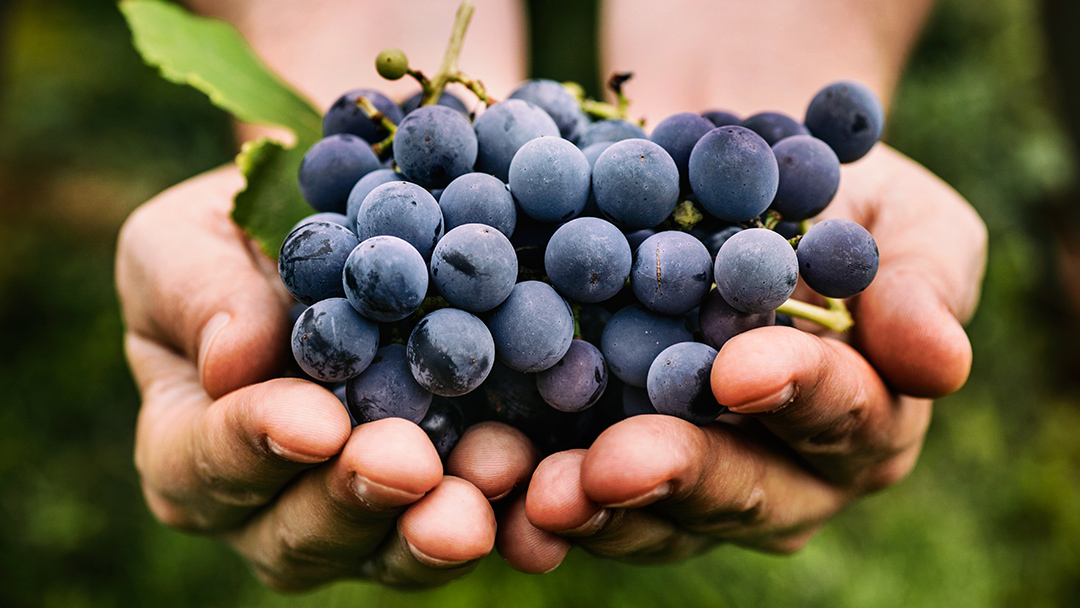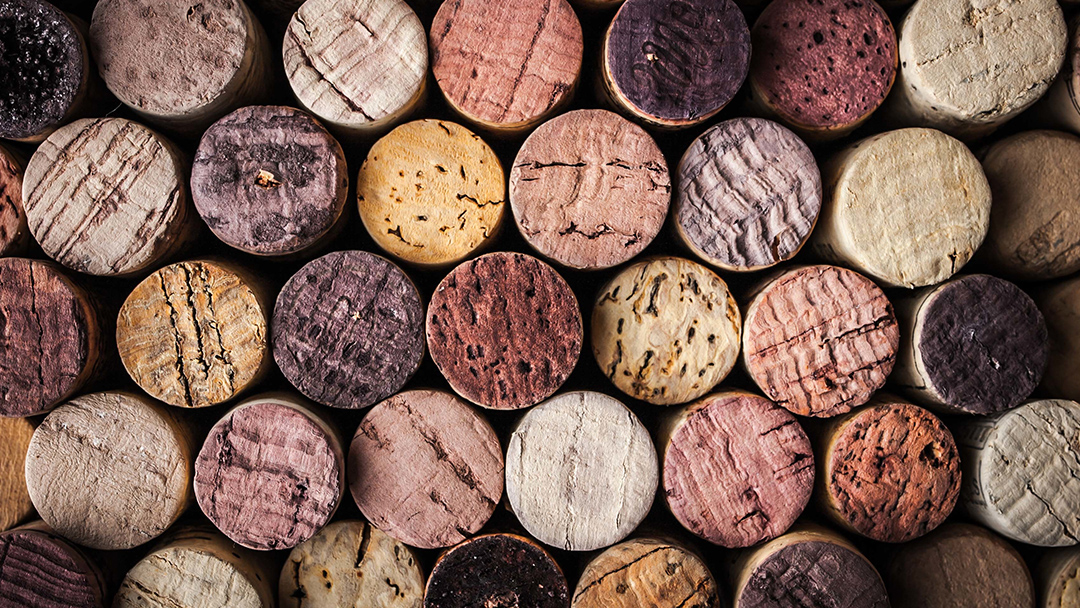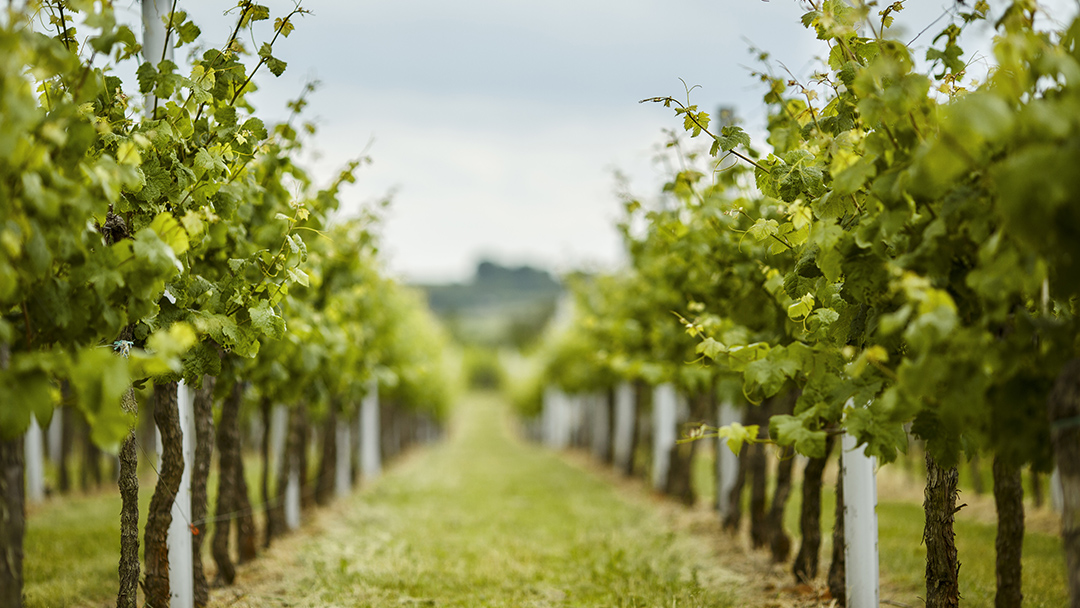Oregon’s wine success is fairly new, even in the realm of New World wines. The Oregon wine industry began in the 1960s and saw the largest growth between 2005 and 2015. Then Wine Enthusiast named Oregon’s Willamette Valley 2016 Wine Region of the Year and the region continues to thrive.
Across the entire state, the Willamette Valley accounts for 69% of planted vineyard acreage, 71% of wine production and 82% of Pinot Noir production.*
Table of Contents
The Landscape

The Willamette Valley boasts a maritime climate, with mild temperatures—a high of 78°F and a low of 52°F—and scarce sunlight. There are six distinct sub-appellations: Chehalem Mountains, Dundee Hills, Eola-Amity Hills, McMinnville, Ribbon Ridge and Yamhill-Carlton.
Grape Varietals

Oregon’s winegrowing consists of over 33,000 acres planted and 72 varieties of grapes. Over half (58%) of the grapes grown are dedicated to pinot noir, followed by pinot gris (14%), all others (11%) and chardonnay (6%).
Red/Black Grapes
Pinot Noir
- Oregon’s most prominent grape
- First planted in the 1960s
- Flavor/aroma: earthy, floral, rustic
Cabernet Sauvignon
- Most widely grown red wine grape in the world
- Flavor/aroma: oak, dark fruits, vanilla
White Grapes
Pinot Gris
- First planted in the region in the 1960s
- Perfect grape for Oregon’s moderate climate
- Flavor/aroma: grapefruit, apple, pear
Chardonnay
- Well-balanced with fresh acidity
- Flavor/aroma: green apple, citrus, pear
Willamette Wine Styles

Behind California, Washington and New York, Oregon is the fourth largest wine producing state in the U.S., and the Willamette Valley is the state’s leading wine region, producing more than 90% of Oregon’s Pinot Noir.
Red Wines
Pinot Noir
- Oregon’s lead varietal
- Heavily compared to Burgundy Pinot Noir
- High acidity, medium-body
- Flavor/aroma: raspberry, truffle, floral, Earthy
Cabernet Sauvignon
- Best aged for several years
- Medium acidity, full-body
- Flavor/aroma: oak, black cherry
White Wines
Pinot Gris
- Oregon’s flagship white wine
- Moderate acidity, medium-body
- Flavor/aroma: apple, melon, honey
Chardonnay
- Fresh acidity, medium-body
- Flavor/aroma: green apple, herb, lemon
Classifications

U.S. federal regulations regarding wine are mandated by the Alcohol and Tobacco Tax and Trade Bureau (TTB). Wine regions in the U.S. are called American Viticultural Areas (AVA) and are based off country, state and county locations, as well as climate and geographical parameters. These laws differ greatly compared to Italy or France’s laws, where wine style, yield level and aging time are regulated.
U.S. Regulations
- 75% of the wine must be produced in the country, state or county if mentioned on the label
- 85% if the label mentions a specific AVA
- 75% of grapes used must be of the declared variety in an identified appellation of origin
Oregon winemakers felt that there was something unique in the soil, grapes and wine they were producing. They took it upon themselves to create labeling regulations that were stricter than the federal government was mandating at the time.
Oregon Regulations
- 100% of grapes must be grown in Oregon
- 95% of grapes must be from AVA listed
- 90% of a wine must be made from the variety named on the label
*Willamette Valley Wineries Association